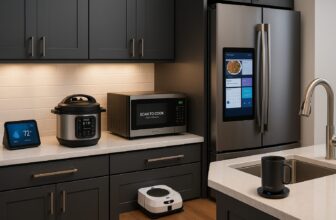
You might see traffic lights using a variety of cutting-edge sensors in addition to induction methods to detect vehicles.
These are frequently mounted close to the lights and don’t involve placing metal inside the road.
You might come across infrared sensors, microwave beam emitters, and cameras as sensing devices.
There are “active” and “passive” types of infrared sensors. A beam of infrared light is emitted by an active system and stops precisely where a car might be at a red light. The sensor can recognize that the space is occupied when a car pulls up because the beam is broken. (Emergency vehicles, such as ambulances and police cars, have active sensors that can ask for a traffic light to be changed; this typically happens when the emergency vehicle‘s lights or sirens are activated.)
Instead, passive sensors use infrared sensing to find heat coming from a car’s engine. However, the system may detect erroneous positives from other intense heat sources, such as direct sunlight.
Similar to an active infrared sensor, a microwave sensor creates a magnetic field all around it. Vehicles disturb the field and alter the waves when they enter it. The sensor can then identify the vehicle as a result of these changes. Compared to infrared emitters, microwave emitters are relatively expensive and don’t suffer from heat contamination problems.
The most intricate traffic light systems we see also have the greatest potential for success: video camera systems. Multiple cameras, akin to those on a CCTV installation, are mounted on the lights. These cameras make it possible to network several traffic stops together—possibly even dozens.
Each one of them communicates with a server running software that can recognize cars and count the number of them at a stop in real time. It might also be able to tell pedestrians from cars. The network takes in all of this information and makes an effort to operate the network of lights as efficiently as possible. The system can then be further improved using long-term analytics, or it can be determined where roads need to be changed. Fog, for example, can significantly impair the cameras’ ability to see.
Lights are frequently installed with two types of sensors, or a sensor and an inductive loop, to guarantee that traffic keeps moving. The system can fall back on another detection type if the first becomes unfeasible due to environmental factors or hardware malfunction, preventing a major traffic snarl.








